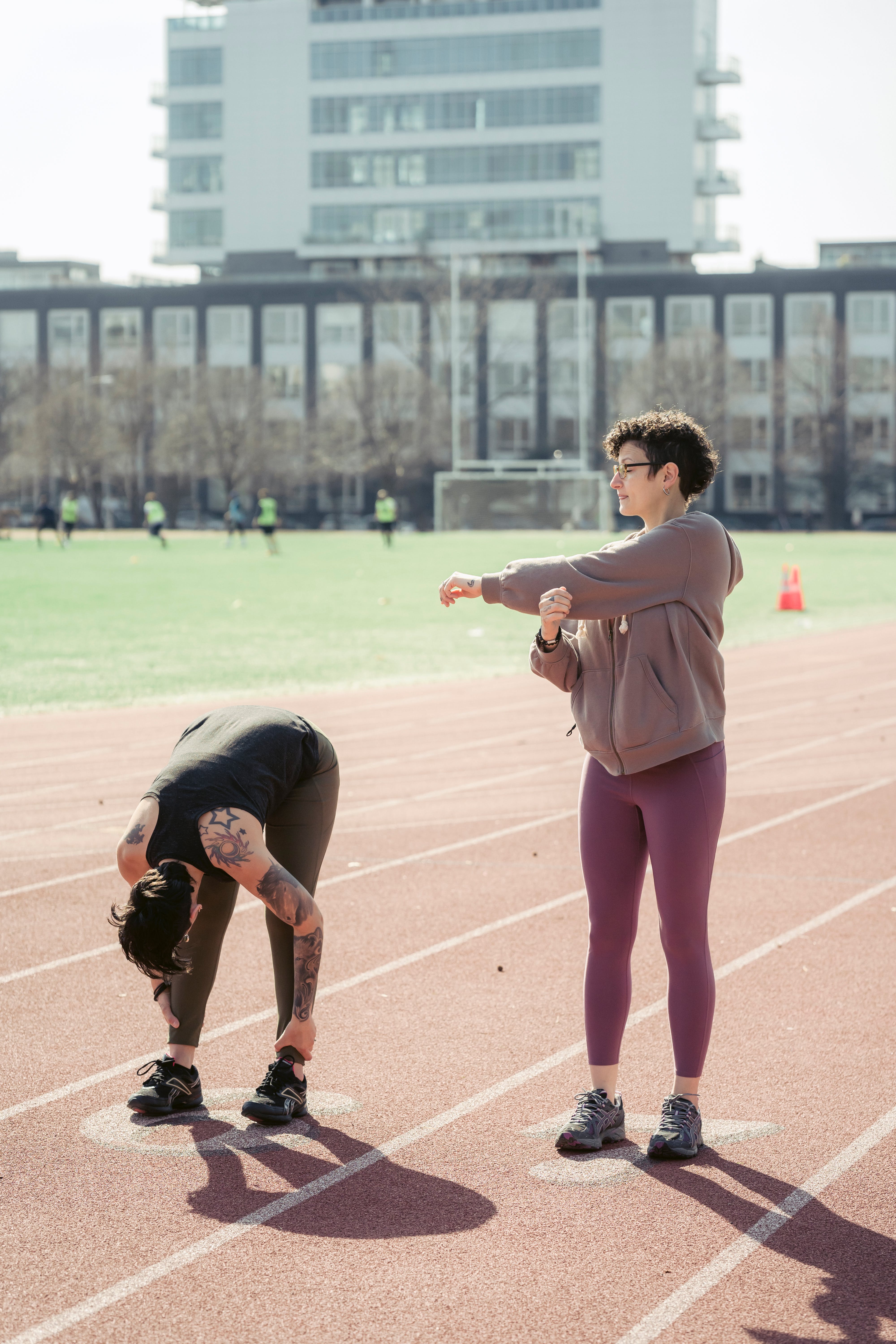Have you noticed a change in how you approach your workouts, or perhaps a decline in the progress you’re used to seeing? If you’re asking yourself, ‘why can’t I workout like I used to,’ you’re recognizing an important signal from your body. It’s a moment of realization that your routine may require a shift to adapt to your evolving fitness needs. Variety isn’t just about keeping boredom at bay; it’s a strategic approach to fostering continuous improvement and sidestepping injury. As our bodies become accustomed to the same exercises, they grow more efficient, but this also means we hit a plateau where improvements are harder to come by. This introduction sets the stage for understanding when and why to introduce new challenges into your fitness regimen and the importance of doing so with intention and strategy.
Embarking on this transformative journey requires knowledge and support. To gain insights into revamping your workout plan and pushing past your current boundaries, explore our resources and begin the next chapter in your fitness journey. Embrace the change and take the first step today!
The Impact of Aging on Exercise Performance

Transitioning from the signs of workout fatigue and burnout, it’s important to consider the inevitable impact of aging on exercise performance. As we grow older, our bodies undergo changes that can affect our endurance, strength, and flexibility. These changes provoke the question: why can’t I workout like I used to? Grasping these alterations is key to adapting our fitness routines and setting attainable goals for our workouts and competitive endeavors.
Age-related decline in maximal oxygen uptake (VO2 max) is a critical factor for those involved in endurance sports like running, as it influences the body’s efficiency in utilizing oxygen during intense activity. Alongside this, changes in body composition occur, with a gradual loss of muscle mass and an increase in body fat, affecting metabolic efficiency. But it’s not all downhill; engaging in regular physical activity can significantly slow these age-related effects, underscoring the importance of consistent exercise through the years.
Moreover, as we age, muscle recovery times extend due to diminished protein synthesis and a decelerated muscle repair process. This underscores the necessity of incorporating sufficient rest and embracing a focus on nutrition and hydration, which become increasingly vital for sustaining performance and circumventing injuries as we get older.
In addition to muscle and cardiovascular changes, joint health is another aspect impacted by the passage of time. Issues such as arthritis can restrict movement and cause pain, prompting a shift in exercise modalities. Some may find solace in low-impact activities like swimming or cycling, or put emphasis on strength training to bolster joint support. With thoughtful adjustments and a proactive mindset, individuals can continue to relish the exhilarating experience of physical activity and strive towards new fitness milestones, despite the natural process of aging.
Lifestyle Changes and Their Effects on Your Fitness

After considering the unavoidable impact of aging on exercise performance, it’s crucial to recognize that daily lifestyle choices also play a significant part in your fitness journey. The intersection of diet, rest, and stress management with your exercise routine can greatly influence your ability to workout with the same vigor as before.
Nutrition, for one, lays the foundation for a robust exercise regimen. A diet replete with whole foods—fruits, vegetables, lean proteins, and whole grains—supplies the necessary energy and nutrients for sustained activity. Especially as metabolism and body composition evolve with age, the right fuel becomes indispensable for maintaining endurance and strength. Alongside a nutritious diet, staying consistently hydrated is pivotal for peak performance and efficient recovery.
Similarly, adequate sleep is the cornerstone of a resilient body, particularly when coping with the slower muscle recovery times that come with aging. Striving for 7-9 hours of restful slumber permits the body to repair and rejuvenate, thus averting fatigue that could impede your fitness ambitions. The consequences of skimping on sleep can be stark, manifesting as waning motivation and hindered performance.
Equally, mitigating stress through mindfulness, yoga, or deep-breathing exercises can restore balance to a lifestyle disrupted by the pressures of daily life. High stress levels can sabotage your fitness by promoting unhealthy eating habits, disrupting your sleep patterns, and diminishing your drive to exercise. Cultivating strategies to navigate stress will not only bolster your workout routine but also elevate your overall quality of life.
Implementing these lifestyle adjustments should be a considered, incremental process, particularly as your body navigates the changes brought on by aging. Small, consistent tweaks—a healthier snack option here, an extra hour of sleep there, a brief meditation session—can incrementally lead to what might be termed fitness freedom. These changes serve as the bridge to the next phase: Revamping your workout plan to accommodate both the wisdom of your years and the evolving landscape of your fitness needs.
Recognizing the Signs of Workout Fatigue and Burnout

As we delve into the intricacies of our fitness journey, it’s imperative to be vigilant about the subtle cues our bodies give us. The transition from a plateau in your workout routine to a state of workout fatigue or burnout can often be insidious, only recognizable through a careful observation of certain markers. Acknowledging these markers is a critical step in maintaining the delicate equilibrium between pushing for progress and ensuring recovery.
Persistent physical exhaustion, despite a full night’s rest, is a glaring red flag indicating that your body is struggling to recuperate. This exhaustion, along with perpetual muscle soreness, stagnating or regressing performance levels, and the frequent occurrence of minor injuries, is your body’s plea for a pause. These are signals that you might be overextending the adaptive capabilities that we previously highlighted as being central to evolving your exercise routine.
On the mental front, a waning drive and the transformation of running from a passion to a burdensome task are clear signs of mental fatigue. The psychological aspect of fitness is often as significant as the physical one. If the thought of lacing up your running shoes fills you with apprehension rather than excitement, it’s a sign that your mental resilience is also being taxed. This can lead to a lapse in focus during workouts, heightening the risk of injury.
Embracing the necessity of rest and recovery is essential; these are not mere intermissions in your regimen, but cornerstones of a robust fitness plan. Heeding the symptoms of workout fatigue and burnout equips you with the wisdom to foster sustainable exercise habits. It sets the groundwork for the next stage of your fitness journey, where understanding the impact of aging on exercise performance becomes increasingly important.
Revamping Your Workout Plan for Sustainable Exercise

As you integrate healthier lifestyle choices and navigate the intricacies of nutrition, sleep, and stress management, it’s equally imperative to align your workout routine with these elements for a holistic approach to fitness. Revamping your exercise plan is the next step in crafting a sustainable regimen that complements your evolving lifestyle and keeps you engaged over the long haul.
Begin by critically evaluating your current exercise habits. Are there elements of your routine that feel more burdensome than beneficial? It might be time to replace these with activities that spark joy and enthusiasm. The essence of a sustainable workout plan lies in its ability to be both enjoyable and compatible with your daily life. Instead of the monotony of a treadmill, for instance, consider the dynamic environment of outdoor running or the camaraderie of a community running group with Run Just For Fun.
Setting attainable goals is crucial. While it’s important to push your limits, unrealistic expectations can lead to discouragement. Create a balanced regimen by including a mix of cardio, strength, and flexibility exercises, which will not only prevent stagnation but will also cultivate a comprehensive fitness base. This diversity in training methods can invigorate your routine and keep you mentally stimulated.
Moreover, honoring your body’s signals is vital for a lasting exercise practice. Integrating rest days and recovery activities like yoga or meditation can significantly contribute to your physical and mental rejuvenation. Attending to your body’s needs lays the foundation for a rewarding and enduring relationship with your fitness journey, ensuring that each effort contributes to your ultimate goal of fitness freedom.
Embracing New Fitness Challenges and Goals

Building upon a revitalized workout plan, the next step is to challenge yourself with new fitness goals. Shifting focus from the comfort of routine to the excitement of new achievements is essential for keeping your fitness journey vibrant. Embrace the opportunity to redefine what you’re capable of, be it through aiming for a faster pace, conquering a hitherto untried fitness class, or completing a distance you’ve never attempted before.
Approach these new objectives with a strategic mindset. It’s not merely about setting targets but about crafting a journey towards those ambitions. This could mean scheduling specific training sessions to improve your endurance, strength, or flexibility, each bringing you a step closer to your ultimate fitness milestones. Celebrate every small victory along this path, as these are the stepping stones to your broader aspirations.
As you embark on this phase, remember the importance of balance. Adapting your ambitions to your body’s feedback is vital to avoid overexertion and maintain motivation. Complement your main fitness activities with alternative exercises that aid in recovery and reduce the risk of injury. Nutrition, too, plays a pivotal role; it’s the fuel that powers your ambition. Ensure you’re eating a diet that supports your increased demands.
With the right mindset, your new fitness challenges will become a thrilling part of your journey rather than a daunting task. There’s no need for a finish line in sight; every step is progress in its own right. Embrace the journey, relish the challenges, and continue to forge a path toward personal excellence in fitness. The road may be long, but the rewards of self-improvement and the joy of pushing past previous limits are invaluable.


